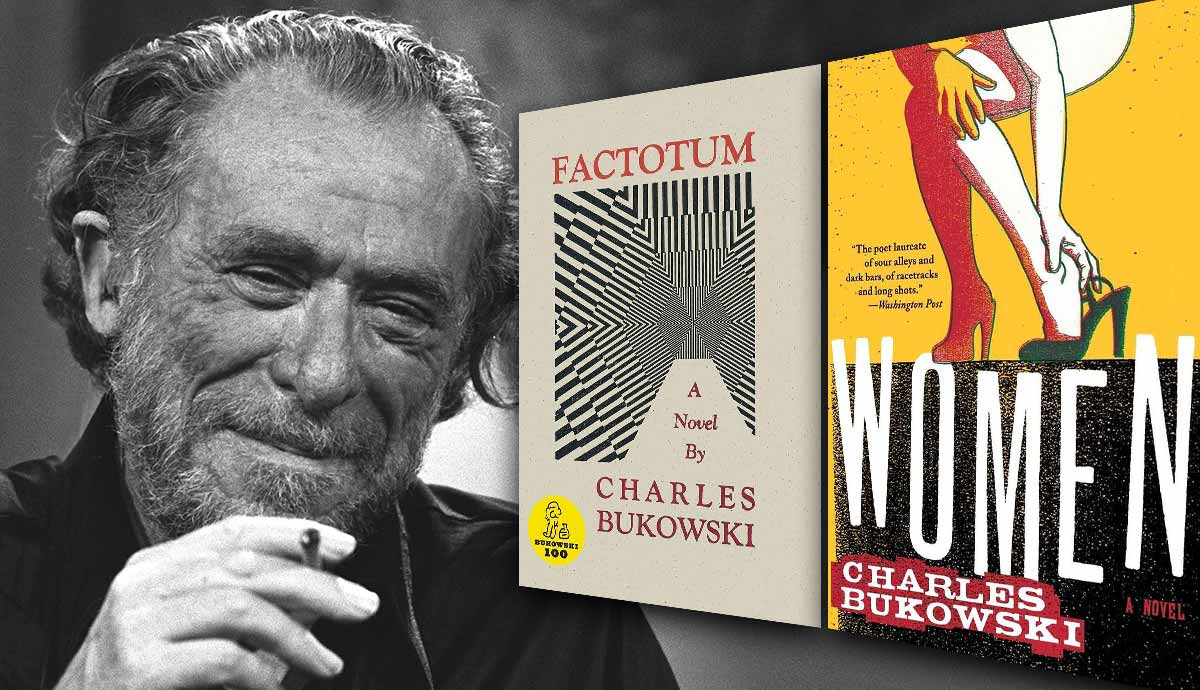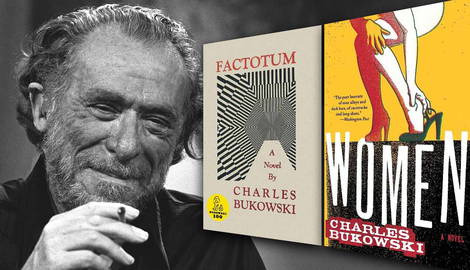
Dark, dirty, and hard-boiled, Charles Bukowski’s novels explore the state of society in the midst of alcoholism, promiscuity, and loose morality. He wrote and published six novels, hundreds of short stories, and thousands of poems, earning a reputation as a champion of small publishers. Constantly submitting his work to independent literary magazines even as his fame rose, Bukowski left a lasting mark on the literary landscape. Let’s dive into five of his notable novels.
Charles Bukowski: From Odd Jobs to Literary Success

Charles Bukowski was an American poet and novelist with German origins. His father, an American, served in World War I in Germany and chose to remain there after 1918. However, in 1923, Bukowski’s parents moved back to the United States. The family spent seven years in Baltimore before moving to Los Angeles in 1930, the city that would influence the author’s work the most.
Bukowski’s childhood was marked by parental abuse, something he credited for his ability to depict undeserved pain later in his career. In his early adulthood, he went through a series of odd jobs and fleeting relationships. During World War II, he was accused of avoiding military service before being tested and deemed unfit for the army. Eventually, he got a job working as a mail man which would serve as the basis for his debut novel in 1971. He would quit and return to this job multiple times.
5. Post Office (1971)

In 1969, John Martin approached him and decided to fund the start of a publishing house by printing Bukowski’s work. This is how Black Sparrow Press came to be. Facing the choice between staying at the post office and going insane or starving and writing, Bukowski opted for the latter. In just three weeks, he finished Post Office. The novel introduces us to his alter-ego Henry Chinsaski, the star of most of his novels. The story follows him as he gets a job as a substitute mailman in Los Angeles, though all he truly wants is to drink alcohol and stay home with his girlfriend. Chinsaski eventually leaves his job and relies on winning at the horse racing track before moving away from L.A to be with a woman.
Post Office is a semi-autobiographical work largely based on Bukowski’s own experiences working for the post. The novel’s main theme is the dullness of an average job, yet it treats other themes that are recurrent in Bukowksi’s later works. With alcoholism, promiscuity, and suicidal nihilism, Post Office feels like the embodiment of a person’s rock bottom.
4. Factotum (1975)

To honor Black Sparrow Press’ publication of his debut novel, Charles Bukowski committed to publishing all of his subsequent novels with them, and four years later, Factotum came out. The novel follows the life of Henry Chinaski, Bukowski’s alter-ego, as he navigates post-World War II America. We meet him jobless, harboring dreams of becoming a successful writer. Drawing from the author’s own experiences with slight alterations, the narrative begins with Chinaski’s rejection from the army.
This setback forces him to move back in with his parents, where he takes up a series of odd jobs in an attempt to stay out of trouble, albeit failing miserably. An eventual big fight with his father prompts him to leave home once again, leading him to drift through the United States, picking up various jobs while staying in boarding rooms. All the while, Chinaski has a dream of being a successful published author. However, he gets rejected by his desired publishing house and plummets deeper into depression, alcoholism, and sexual affairs.
Factotum is set in a very interesting period in American history during the mid-1940s when the American economic boom was happening. It was an era of prosperity, availability of work, and cheap cost of living. The USA, coming out of World War II, was recovering from the Depression that struck it in the 1930s, and its economy was growing at a fast rate. However, in Factotum Bukowski criticizes the darkness below the apparent prosperity, as many contemporary novels and films did, and makes the argument that economic success does not necessarily equal happiness.
3. Women (1978)

Readers may be more familiar with the story from the popular sitcom inspired by this book, Californication. In this hit TV show, the protagonist Hank is a famous author who exploits his success by engaging in a series of sexual relationships with random women. While the plot of Bukowski’s Women differs slightly, the two share striking similarities. The main difference, however, lies in the protagonist’s diminishing enjoyment of this lifestyle as the story unfolds.
Women once again features Bukowski’s alter-ego Henry Chinaski, but this time, we meet him as a famous and successful writer. This is a departure from his usual portrayal as an out-of-work bum. Chinaski engages in multiple sexual relationships with various women, the majority of whom are fans reaching out to him through mail.
In the initial chapters of the book, Chinaski is deeply involved with a woman named Lydia. However, following the termination of their relationship, he starts rapidly switching between partners. The sexual acts depicted in Women are explicit and occasionally include some very distasteful moments, a characteristic not uncommon in Bukowski’s works.
The recurring theme revolves around a developing guilt complex as Henry Chinaski slowly realizes the destructive impact he has on the women around him. He acknowledges that his partners contribute more to the relationship than he does and observes his inability to form genuine feelings, using the women primarily for sex. Attempts to justify this guilt include a childhood devoid of love and affection, late success in his personal life, and an early failed marriage.
2. Hollywood (1989)

Hollywood is Charles Bukowski’s penultimate novel and the last to be a roman-a-clef based on his own experiences. It’s also the last to star his alter-ego Chinaski. Bukowski was approached to write the script for a film based on his life as a writer, and after some initial hesitation, he agreed, enticed by a generous sum of money and significant artistic involvement that was offered to him. Barfly stars Mickey Rourke as Hank Chinaski, a barfly frequenting the low-down bars of Los Angeles.
In a performance that attempts to emulate a young Marlon Brando, Rourke manages to capture the essence of Bukowski’s fiction. The tale depicts endless drinking, sex, and fights in bars, with the despair and nihilism portrayed in a gritty yet glamorized manner, creating an intriguing contrast. Hollywood recounts Bukowski’s experiences while he was involved in the making of the film. The novel uses alternative names for all the people involved in the process but keeps most of the events intact. Out of the six novels that Bukowski wrote and published, Hollywood perhaps captures the essence of this one-of-a-kind writer more than any other. It is dark, hard-boiled, often absurd, and beautifully depressing.
1. Charles Bukowski’s Pulp (1994)

Bukowski started working on what would be his final novel in 1991, three years before his death. Pulp is the first of his novels that does not star his alter-ego Henry Chinaski, although he does appear in it. Instead, the protagonist is a private detective called Nicky Belane.
Right from the opening chapters, one can see where Pulp gets its name from. Pulp fiction, or more specifically pulp novels, is a genre of fiction that was popular in the 1930s. It mostly featured detective stories. Authors like Raymond Chandler, Dashiell Hammett, and James M. Cain wrote these types of stories which would become the basis of film noir in the 1940s. The most iconic author of this genre is Mickey Spillane, and one can notice the similarity between his name and that of the protagonist of Pulp.
The novel is a parody of the genre featuring Bukowski’s dark and gritty style, accompanied by a previously unseen surreal dimension that introduces elements such as aliens, and manifestations of death. Pulp continuously borrows and satirizes elements of pulp fiction and noir stories. There’s the private detective, the femme fatale, and even story-specific elements like the Maltese Falcon from Dashiell Hammett’s iconic novel. This novel showcased Bukowski at his most relentless, yet with certain sad undertones as the author grappled with his own approaching death, attempting to come to terms with it.










